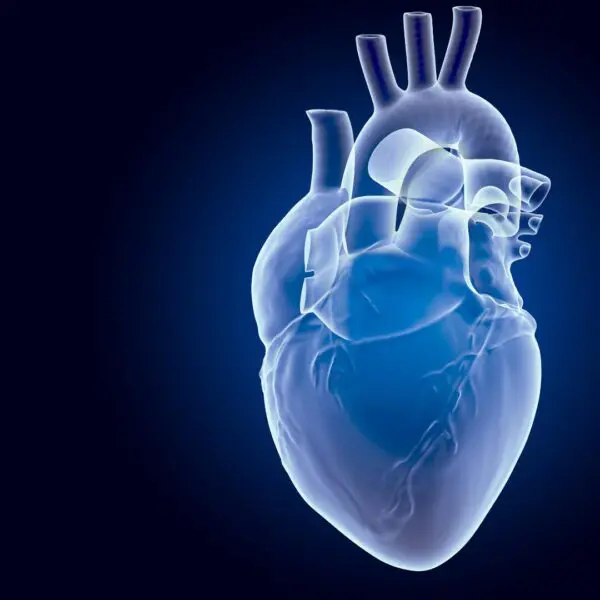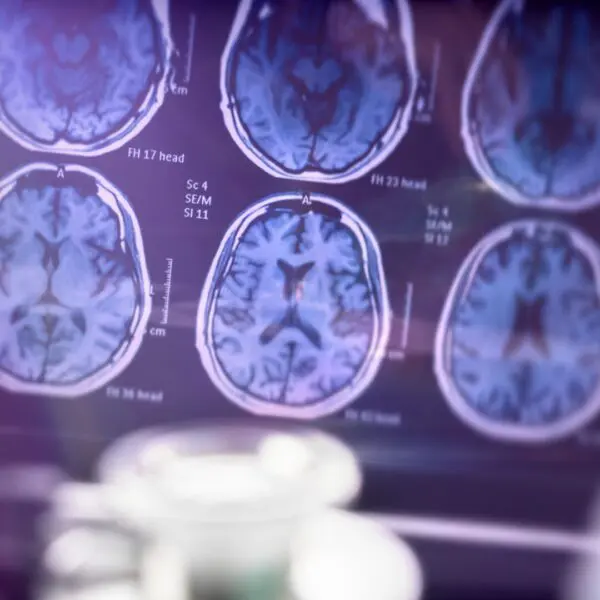We are happy to introduce EGCG as the latest addition to our unique intravenous compound offerings (IV therapy). Epigallocatechin gallate (EGCG) is the principal polyphenolic compound found in green tea. Polyphenols are plant-derived antioxidant compounds that contribute their color, flavor, and natural protection against pests and diseases. These compounds are believed to offer numerous health benefits for humans when consumed through a diet rich in plant-based foods.
Green tea has captivated researchers worldwide with its remarkable pharmacological properties. EGCG accounts for 50-80% of the total catechin content in green tea and is a powerful antioxidant believed to be responsible for many of the health benefits associated with green tea consumption.
The bioavailability of EGCG poses a significant challenge when administered orally because of extensive metabolism in the gastrointestinal tract and liver degradation, resulting in relatively low systemic bioavailability, typically less than 5%. Intravenous administration overcomes this limitation by delivering EGCG directly into the bloodstream, enabling higher plasma concentrations and potentially enhancing its therapeutic efficacy.
The most popular and appreciated herbal teas are produced from Camellia sinensis tea plant. Green, oolong, and black teas are varieties obtained from fresh C. sinensis leaves by different manufacturing processes. The production of green tea involves steaming or pan-frying the fresh leaves of the Camellia sinensis plant, followed by rolling and drying. This fixation step inactivates enzymes that would otherwise break down the polyphenols and pigments in the leaves, preserving a high proportion of bioactive compounds like EGCG in the final product. In contrast, the production of oolong and black teas involves additional steps such as withering and fermentation, which produce EGCG content. EGCG has been extensively studied for its pharmacological properties, including antioxidant, anti-inflammatory, anti-cancer, and metabolic effects. It is believed to exert these effects by modulating various intracellular signaling pathways and scavenging reactive oxygen species, also known as free radicals. The unique manufacturing process of green tea, which preserves EGCG and other catechins, is believed to contribute to its potential health benefits.
Scientific evidence supporting EGCG’s health benefits has existed for quite some time. The challenge with EGCG, similar to many compounds, is that while it works in the lab, the results may be disappointing in the real world due to its bioavailability. I personally take a green tea supplement daily, but I’m unsure about my absorption rate. The same applies to several other supplements I take regularly, including Resveratrol, Quercetin, and an NAD+ precursor. Fortunately, these are all available in an intravenous form, significantly increasing bioavailability.
Bioavailability and Pharmacokinetics
One of the primary advantages of IV administration is that it overcomes the bioavailability limitations associated with oral consumption. Pharmacokinetic studies have demonstrated that IV administration of EGCG results in significantly higher maximum plasma concentration than oral administration.
Weight Loss
EGCG promotes weight loss through several mechanisms. It increases fat oxidation and metabolism, boosting metabolism by 3-4% and resulting in an additional 60-80 calories burned per day. Combined with caffeine from green tea, EGCG enhances fat burning during exercise and at rest. Animal studies suggest it may reduce dietary fat absorption and inhibit lipogenesis by downregulating lipogenic enzymes. EGCG also promotes fat breakdown by increasing hormones like norepinephrine that signal fat cells to release stored fat for energy. It may particularly reduce harmful visceral (belly) fat accumulation. Studies show EGCG can amplify exercise-induced fat burning by up to 17%. While EGCG alone has modest weight loss effects (around 3 lbs. on average), it can contribute to more significant fat loss when combined with a healthy diet and exercise, with optimal dosages appearing to be 100-460 mg of EGCG along with 80-300 mg of caffeine daily.
Cancer Prevention and Treatment
EGCG’s potential as an anticancer agent has been extensively investigated, with IV administration offering promising avenues for enhanced efficacy. In vitro (in the lab) studies have demonstrated EGCG’s ability to induce apoptosis (a type of cell death) and inhibit the proliferation of various cancer cell lines, including breast, prostate, lung, and colon cancer cells. This is achieved through mechanisms such as cell cycle arrest, suppression of oncogenic signaling pathways, and inhibition of angiogenesis.
Preclinical studies in animal models have further corroborated EGCG’s anticancer effects, with IV administration demonstrating superior tumor growth inhibition and reduced metastasis compared to oral administration. For instance, Somers-Edgar et al. (2008) showed that IV administration of EGCG significantly reduced tumor growth and metastasis in a mouse model of human breast cancer, suggesting its potential as an adjuvant therapy for cancer treatment.
Antiviral Properties and Potential Against Viral Infections
EGCG exhibits potent antiviral properties, making it a promising candidate for combating viral infections. Research has shown that EGCG can inhibit the entry, replication, and assembly of various viruses, including influenza, hepatitis C, and human immunodeficiency virus (HIV). The antiviral mechanisms of EGCG are multifaceted, including direct inactivation of viral particles, inhibition of viral entry into host cells, interference with viral replication machinery, and modulation of host cell signaling pathways involved in viral pathogenesis. We must realize that viruses constitute a significant reason we will see health declines with aging. Viruses we had as children become more active and lead to inflammation, resulting in inflammaging – a process where inflammation accelerates aging.
While oral consumption of EGCG may provide some antiviral benefits, IV administration could enhance its antiviral effects by achieving higher systemic concentrations and facilitating more efficient delivery to target tissues and organs. This approach may be promising for combating severe viral infections or when rapid and potent antiviral action is required. This might be especially helpful when combined with EBO2 (Extracorporeal Blood Oxygenation and Ozonation – helps fight inflammation).
Anti-inflammatory Aspects
EGCG combats inflammation through multiple mechanisms. It blocks inflammatory proteins called cytokines that are released by immune cells, directly inhibiting the production of some key cytokines that drive inflammation. As an antioxidant, EGCG helps neutralize excess free radicals – unstable molecules that can damage cells and promote inflammation. It also promotes better blood flow by relaxing blood vessels and reducing platelet stickiness, which helps reduce inflammation. Additionally, EGCG supports a healthy gut by beneficially affecting gut bacteria, which is important as gut inflammation is linked to many diseases.
Brain Health
EGCG promotes brain health and cognitive function through neuroprotective effects, improved cognitive function, and increased brain bioavailability. Its antioxidant and anti-inflammatory properties protect brain cells (neurons) from oxidative stress and inflammation-induced damage, potentially slowing the progression of neurodegenerative diseases like Alzheimer’s and Parkinson’s. EGCG inhibits the aggregation and accumulation of amyloid-beta (Aβ) and tau proteins in the brain associated with Alzheimer’s and can chelate iron, reducing iron-induced oxidative stress. Animal studies show long-term EGCG administration improves spatial learning, memory, and cognitive performance, possibly due to its neuroprotective effects and modulation of neurotransmitter levels, as it can regulate the balance of excitatory (glutamate) and inhibitory (GABA) neurotransmitters in the brain, promoting efficient synaptic transmission and potentially enhancing cognitive abilities. Some human studies have found an association between higher green tea consumption and reduced risk of age-related cognitive decline. EGCG’s ability to cross the blood-brain barrier more efficiently in aging or cognitively impaired individuals may increase its neuroprotective effects in these populations. While more research is needed, especially in humans, the available evidence suggests that EGCG’s antioxidant, anti-inflammatory, and neuroprotective properties and its ability to modulate neurotransmitters and cross the BBB contribute to its potential benefits for brain health and cognitive function.
Some Final Thoughts
Intravenous administration of EGCG offers promising therapeutic potential by overcoming the bioavailability limitations of oral consumption. EGCG has demonstrated remarkable pharmacological properties, including anticancer, antiviral, anti-inflammatory, weight loss, and neuroprotective effects. By achieving higher systemic concentrations through intravenous delivery, EGCG may exhibit enhanced efficacy in combating various diseases and promoting overall health. The potential of intravenous EGCG represents an exciting frontier in leveraging the therapeutic powers of this natural antioxidant compound derived from green tea. Remember that the benefits will only increase when we combine intravenous EGCG with other modalities and regimens at PUR-FORM.
*Please note the FDA has not evaluated these statements.
You might also enjoy reading:














